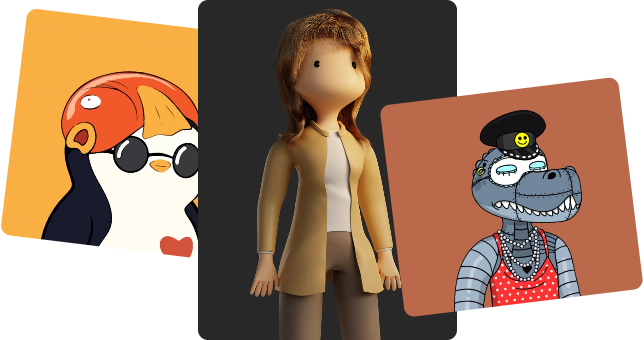
NFT ART DESIGN AGENCY
Create More
Innovative NFT Collections With
PNC LOGOS
An NFT Art Design Agency with a Difference. At PNC Logos we create brands. We help you build NFTs with your signature bringing your distinct style to life. Not just original, but unparalleled and totally you!


The NFT Art Design Agency
New Way NFTs
We are a group of crypto enthusiasts who support and develop NFT art because we believe the future is about digital investments and art is the way forward
Wondering how to make NFT art ?
You are at the right place.
Top collections over last 7 days
The non-fungible tokens (NFT) bring many opportunities for collectors and artists. Our expertise enables our clients to create digital art,
get the right buyers, and thrive in the blockchain market

 0.191
0.191  1600
1600 
 0.44
0.44  2,600
2,600 
 6.63
6.63  102,200
102,200 
 16
16  107,594.49
107,594.49 
 4.82
4.82  106,752.46
106,752.46 
 24.5
24.5  4,076.44
4,076.44 
 13.6
13.6  8,174.34
8,174.34 
 11.02
11.02  13,609.06
13,609.06 
 142.42
142.42  16,553.69
16,553.69 
 6.88
6.88  17,084.71
17,084.71 
 40.9
40.9  24,131.99
24,131.99 
 3,40
3,40  60000
60000 
Choose a package
Multiple NFT character creator packages to choose from that will fit your requirements
Get A Quote
We design
Our NFT designers are exceptional in what they do. We handpick them based on their expertise
Get A Quote
Ready to deliver
NFT services with quick turnaround times. You don’t have to wait for weeks to get your art delivered
Get A Quote
Upload and earn
Receive your digi art, upload it and start earning great money right away without any extra charges
Get A QuoteWorld of NFT
Amazing NFT Art in
Easy Steps
Recieve inside knowledge of the NFT and crypto world when you order your art at PNC Logos. Our team comprises NFT online creators who work with enthusiasts like you across the world, helping them excel in the digital world. They will guide you through the puzzle of NFT art in quick, easy steps.
NFT Trending Now
Our Collection
Our Diverse NFT Portfolio
PNC is a full-stack digital marketing agency. We don't just create your NFT creations, we offer a range of services, including a diverse digital art portfolio.
Our experts have created 1200 avatars using more than 500 techniques and animations.
By NDarboy Caknan

Creyzies
02004 ETH
By NDarboy Caknan

Toxic Skulls Club
02004 ETH
By NDarboy Caknan

Cool Cats NFT
02004 ETH
By NDarboy Caknan

Doodles
02004 ETH
By NDarboy Caknan

Meebits
02004 ETH
By NDarboy Caknan

Azuki
02004 ETH
By NDarboy Caknan

Bored Ape Kennel Club
02004 ETH
By NDarboy Caknan

RTFKT – MNLTH
02004 ETH
See All NFTs
Our Collection
Our Diverse NFT Portfolio
PNC is a full-stack digital marketing agency. We don't just create your NFT creations, we offer a range of services, including a diverse digital art portfolio.
Our experts have created 1200 avatars using more than 500 techniques and animations.










See All NFTs
Latest News
NFTs News you don’t want to miss!
A fast-changing industry with experts having their eyes on the prize. If you really want to make it big and want to avail the right NFT as a service,
keep an eye on the latest market trends and make an informed decision

March 14 2022
How to Sell an NFT at Auctions?

March 14 2022
Where can I find the best wallets for NFT?

April 26 2022
Benefits of Designing NFT Art
Testimonials
Our Client’s & Partner’s Feedback
If you are skeptical about hiring our NFT design service, fret not. Our clients and partners have something to say about us. At PNC, we are all about building a digital community that strives to bring innovation and inspiring digital art in its purest form
Jane Fuller
NFT Enthusiast
PNC was outstanding when delivering the designs to me. Their team was so helpful and really cared what my preferences were. I made some good money online with their help and insights. No doubt PNC logo is my go-to NFT virtual art gallery development service. Thanks everyone!
Bill Dolan
NFT Gamer
I was skeptical at first to use PNC for my NFT avatar. However, once I spoke to their NFT designer, I was convinced I was in the right hand as she had excellent insights to share. They did not just help me develop my NFT character, but they helped me launch it with a bang.
Harry Shane
NFteers
I was new in the NFT world and talked to PNC logos for my first gig. Their team really does have inside knowledge of the crypto world and saved me from making a colossal blunder. I would have made some serious mistakes regarding my digital art and its launch. Kudos to the team!
Harry Shane
NFteers
I was new in the NFT world and talked to PNC logos for my first gig. Their team really does have inside knowledge of the crypto world and saved me from making a colossal blunder. I would have made some serious mistakes regarding my digital art and its launch. Kudos to the team!
Latest Posts
From the PNC Logos ’ NFT Blog
Get the latest insights about everything HOT that is happening. Learn cool digital tricks and get in on the hype about digital earnings through
jaw-dropping NFT digital art. Our blogs show you the right way to stand out in the NFT Art world

October 09 2018
7 Tips for Creating Clickable Call to Action Buttons

November 22 2018
5 tips to ace social media branding in 2024

March 14 2022
How to Price NFT art and sell it for a profit?

March 14 2022
How to Sell an NFT at Auctions?

March 14 2022
Where can I find the best wallets for NFT?
See All Blogs
Contrary to popular belief
Are NFTs complicated to figure out?
There is nothing complicated in the NFT world. They are just crypto tokens that allow you to fully own a digital asset- the most popular asset is digital artwork.
The best thing about NFT is that it signifies provenance. If you own a digital asset, the NFT will record your ownership. You have nothing to worry about if you are a collector, as your investment is protected and can be traced back to the original creator.
Are NFTs are not a good investment?
Many people believe that NFTs are a terrible investment because art is a bad investment. However, the market is dominated by speculation, just like in the real world, where a price hike in one art piece can result in other pieces decreasing in value. In the NFT world, it is the same, but it offers open editions of the digital collection, which can be resold. This is when there are more digital pieces of popular digital art to be sold to buyers for a limited time.
The best thing to do is invest in original NFTs and have clear provenance. Your goal should not be asset appreciation; instead, your goal should be risk management.
With PNC logos, you will get a step-by-step guide and more such insights into how the NFT world works. Rest assured, you will only make good money with us than risk losing it

FAQS
How Can We Help You?
Get In Touch
Get In Touch













